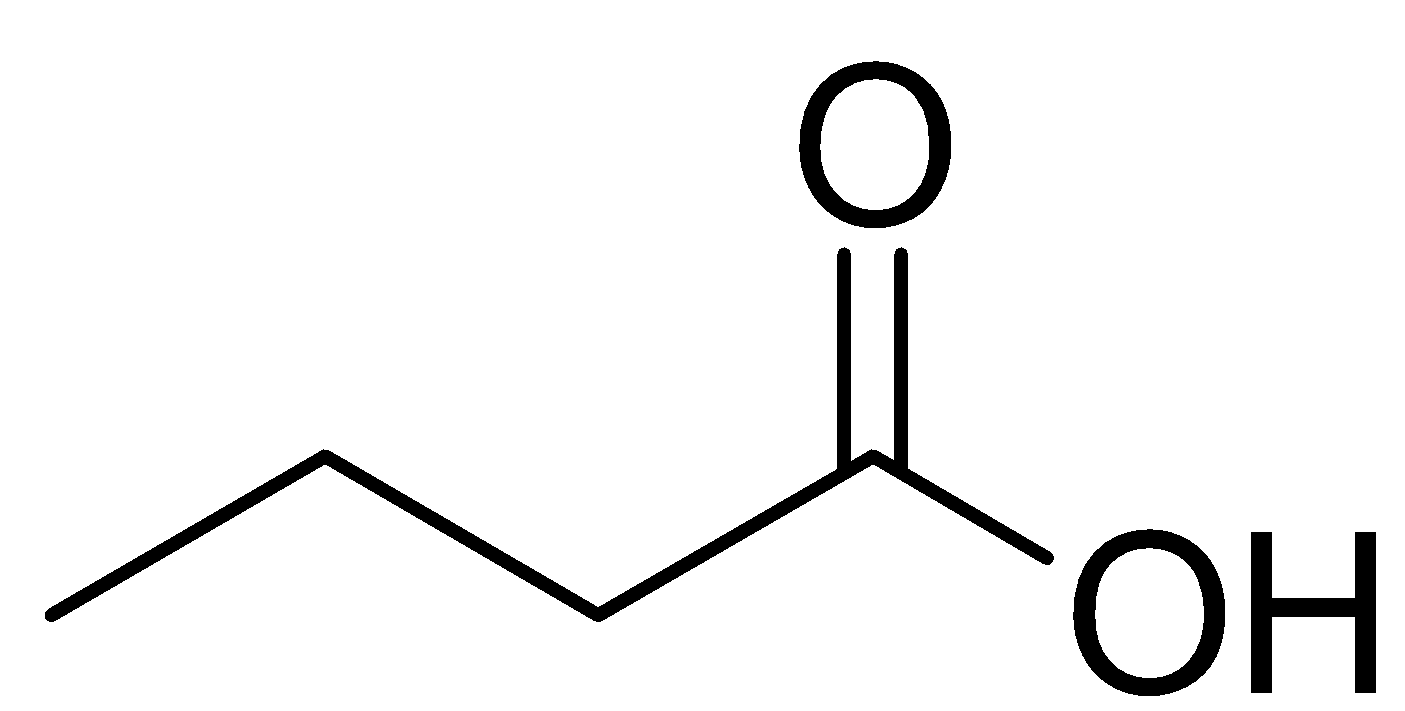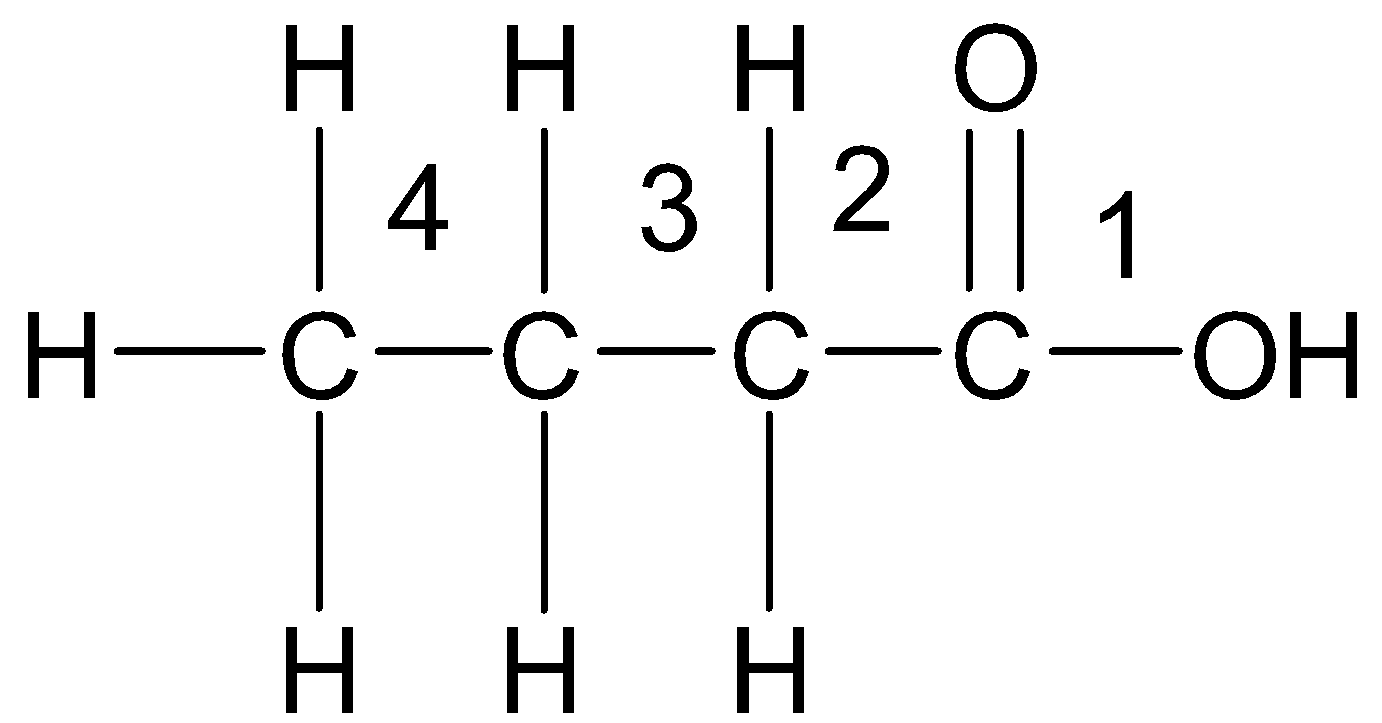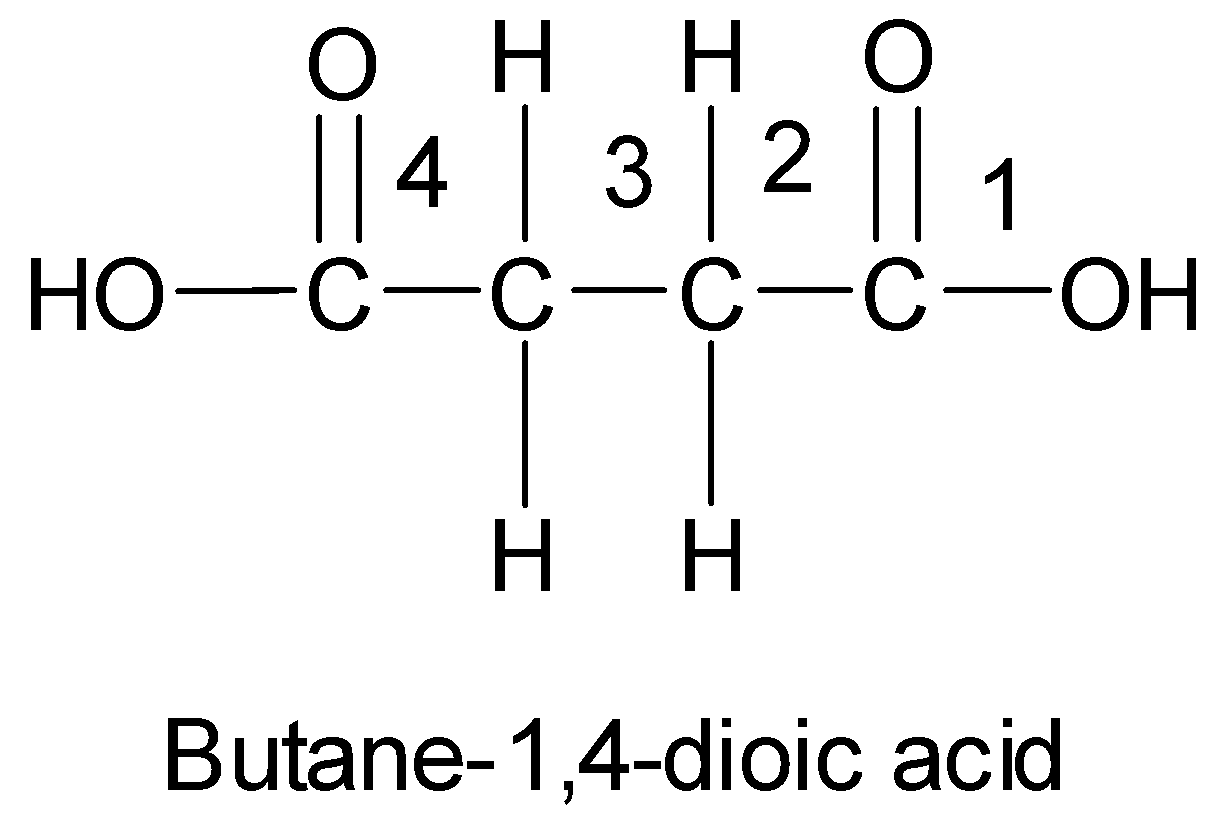
Write the structural formula and IUPAC name of the given compound with a terminal acid.
Molecular formula: ${{\text{C}}_{\text{4}}}{{\text{H}}_{\text{8}}}{{\text{O}}_{\text{2}}}$ .
Answer
575.1k+ views
Hint: The given compound is a terminal acid which means that it contains the carboxyl functional group ${\text{ - COOH}}$ at the end of the chain.
Since the molecular formula is given to be ${{\text{C}}_{\text{4}}}{{\text{H}}_{\text{8}}}{{\text{O}}_{\text{2}}}$ and there is a carboxyl ${\text{ - COOH}}$ group present, therefore, the remaining part of the compound has the ${{\text{C}}_3}{{\text{H}}_7}$ group.
Complete step by step answer:
The compound is a carboxylic acid having the formula ${{\text{C}}_{\text{3}}}{{\text{H}}_{\text{7}}}{\text{ - COOH}}$ .
The ${{\text{C}}_3}{{\text{H}}_7}$ group is propyl group which can also be written as ${\text{C}}{{\text{H}}_3}{\text{C}}{{\text{H}}_2}{\text{C}}{{\text{H}}_2}$ group.
Therefore, the structural formula of the given compound is

Or,

-According to IUPAC nomenclature, if organic compounds contain one principal functional group, then the longest continuous chain of carbon atoms containing the principal functional group is selected.
-If the functional group is such that a carbon atom is already present in it, such as the carboxyl functional group, then the numbering of the carbon chain is done in such a way that this functional group gets the lowest position of 1. While naming the compound, the position 1 is not written with such a group.
-For unsubstituted monocarboxylic acids, the IUPAC name is obtained by changing the suffix ‘ane’ of the corresponding alkane to ‘oic acid’ or in other words, it is ‘alkanoic acid’.
-Now, let us see the structure of the given acid. The carboxyl group is given the position 1 which is omitted while naming. Numbering in this way, we see that there are total 4 carbon atoms involved and so we get:

So, the IUPAC name is Butanoic acid.
Note:
-In case of dicarboxylic acids, the IUPAC names are obtained by adding the suffix ‘dioic acid’ to the name of the parent alkane.
-The position of the carboxyl groups is indicated by Arabic numerals. For example, the following dicarboxylic acid is butane-1, 4-dioic acid.

Since the molecular formula is given to be ${{\text{C}}_{\text{4}}}{{\text{H}}_{\text{8}}}{{\text{O}}_{\text{2}}}$ and there is a carboxyl ${\text{ - COOH}}$ group present, therefore, the remaining part of the compound has the ${{\text{C}}_3}{{\text{H}}_7}$ group.
Complete step by step answer:
The compound is a carboxylic acid having the formula ${{\text{C}}_{\text{3}}}{{\text{H}}_{\text{7}}}{\text{ - COOH}}$ .
The ${{\text{C}}_3}{{\text{H}}_7}$ group is propyl group which can also be written as ${\text{C}}{{\text{H}}_3}{\text{C}}{{\text{H}}_2}{\text{C}}{{\text{H}}_2}$ group.
Therefore, the structural formula of the given compound is

Or,

-According to IUPAC nomenclature, if organic compounds contain one principal functional group, then the longest continuous chain of carbon atoms containing the principal functional group is selected.
-If the functional group is such that a carbon atom is already present in it, such as the carboxyl functional group, then the numbering of the carbon chain is done in such a way that this functional group gets the lowest position of 1. While naming the compound, the position 1 is not written with such a group.
-For unsubstituted monocarboxylic acids, the IUPAC name is obtained by changing the suffix ‘ane’ of the corresponding alkane to ‘oic acid’ or in other words, it is ‘alkanoic acid’.
-Now, let us see the structure of the given acid. The carboxyl group is given the position 1 which is omitted while naming. Numbering in this way, we see that there are total 4 carbon atoms involved and so we get:

So, the IUPAC name is Butanoic acid.
Note:
-In case of dicarboxylic acids, the IUPAC names are obtained by adding the suffix ‘dioic acid’ to the name of the parent alkane.
-The position of the carboxyl groups is indicated by Arabic numerals. For example, the following dicarboxylic acid is butane-1, 4-dioic acid.

Recently Updated Pages
Why are manures considered better than fertilizers class 11 biology CBSE

Find the coordinates of the midpoint of the line segment class 11 maths CBSE

Distinguish between static friction limiting friction class 11 physics CBSE

The Chairman of the constituent Assembly was A Jawaharlal class 11 social science CBSE

The first National Commission on Labour NCL submitted class 11 social science CBSE

Number of all subshell of n + l 7 is A 4 B 5 C 6 D class 11 chemistry CBSE

Trending doubts
What is meant by exothermic and endothermic reactions class 11 chemistry CBSE

10 examples of friction in our daily life

One Metric ton is equal to kg A 10000 B 1000 C 100 class 11 physics CBSE

1 Quintal is equal to a 110 kg b 10 kg c 100kg d 1000 class 11 physics CBSE

Difference Between Prokaryotic Cells and Eukaryotic Cells

What are Quantum numbers Explain the quantum number class 11 chemistry CBSE




